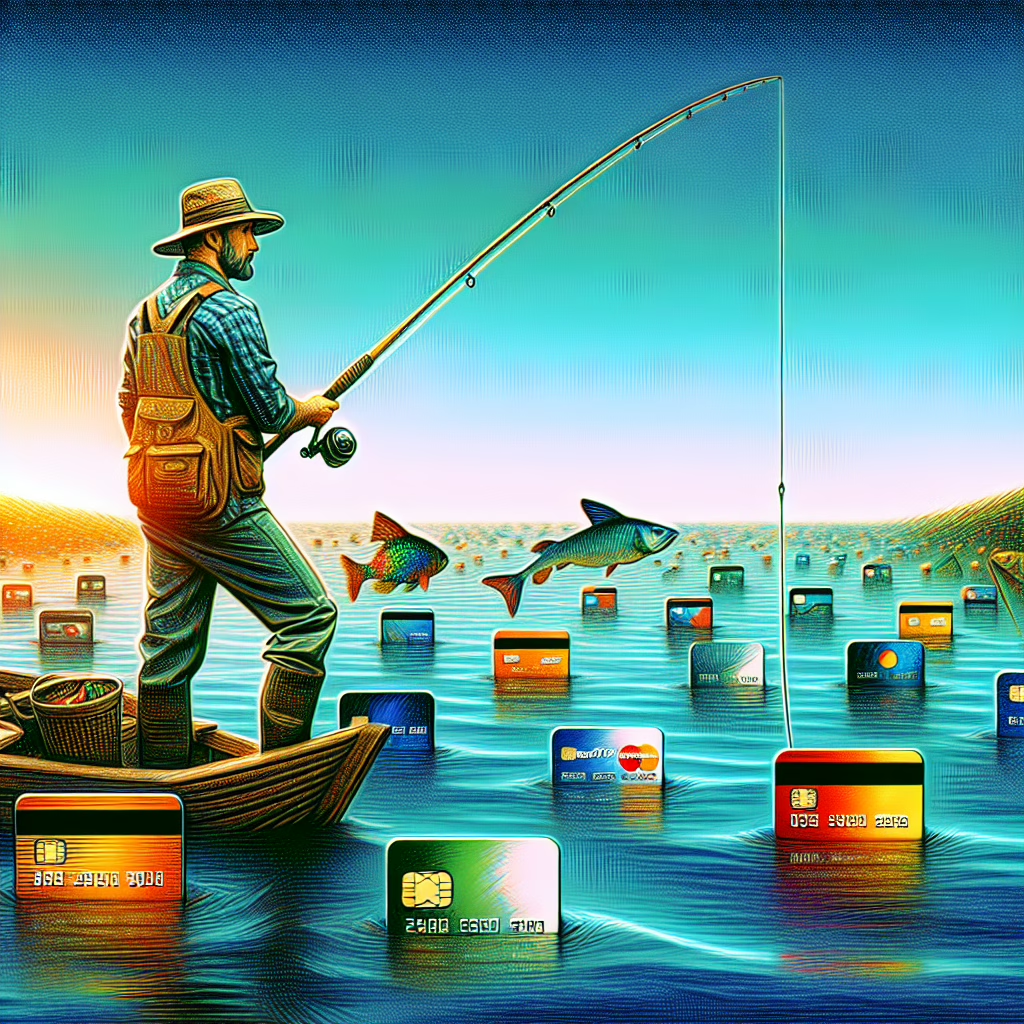Ah, phishing attacks! Those dastardly schemes that make you feel like a contestant on a very unfunny game show where the prize is identity theft. In 2025, phishing has evolved into a sophisticated art form, stealing nearly a million credit cards with the finesse of a magician pulling rabbits out of hats. But fear not! With a sprinkle of awareness and a dash of vigilance, you can keep your credit cards safe from these digital con artists.
What Exactly is Phishing?
Phishing is like that annoying friend who keeps asking for your personal information under the guise of being trustworthy. This sneaky technique often involves emails, texts, or even social media messages that appear to come from reputable sources—think banks or online retailers. They lure you into clicking on links or downloading attachments that can lead to disaster.
In 2025, phishing tactics have taken on new forms, including voice phishing (vishing) and SMS phishing (smishing). It’s a full-blown buffet of deceit! So how do you protect your precious credit cards in this treacherous landscape?
Spotting the Bait: Signs of Phishing Attempts
Let’s face it; not all heroes wear capes—some just know how to spot a phishing attempt from a mile away. Here are some telltale signs that you’re being baited:
- Unusual sender addresses: If your bank’s email ends with “@sneakyspam.com,” it’s time to raise an eyebrow.
- Generic greetings: Emails starting with “Dear Valued Customer” instead of your name are often as genuine as a three-dollar bill.
- Urgency: Messages that scream “ACT NOW OR ELSE!” usually indicate a scam. Take a deep breath before clicking.
- Suspicious Links: Hover over any link before clicking to see where it really leads. If it looks fishy, don’t click!
- Too Good to Be True Offers: If the email promises you a large sum of money for little to no effort, it’s likely a scam.
How to Keep Your Credit Cards Safe from Phishing Attacks
Now that you’re armed with the knowledge of what to look for, let’s dive into some practical tips to protect your credit cards from these cyber tricksters:
- Enable Two-Factor Authentication (2FA): It’s like having an extra lock on your front door. Even if someone gets your password, they’ll still need that second factor to get in.
- Use Strong Passwords: Don’t use “password123” for your online accounts. Mix it up with letters, numbers, and symbols; think of it as creating a secret sauce only you can decipher!
- Regularly Monitor Accounts: Check your bank statements regularly. If you see something suspicious, report it faster than you can say “fraud alert!”
- Educate Yourself: Stay informed about the latest phishing techniques. Knowledge is power! And remember, even the best can fall for tricks—just ask anyone who’s ever clicked “yes” on those pesky pop-ups.
- Utilize Security Software: Always keep your antivirus and anti-malware software updated to detect and prevent potential threats.
The Aftermath: What if You’ve Fallen Victim?
If you find yourself on the unfortunate side of a phishing attack and your credit card information has been compromised, don’t panic! Here’s what to do:
- Contact Your Bank: Notify them immediately to freeze your account and prevent further transactions.
- Change Your Passwords: Update passwords for all accounts linked to the compromised card. It’s time to flex those password creation muscles!
- Monitor Your Credit Report: Keep an eye out for unfamiliar accounts or inquiries—it’s like detective work but less glamorous.
- Report the Crime: File a report with the Federal Trade Commission (FTC) and local authorities if you’ve lost money to a phishing scam.
Your Final Line of Defense Against Phishing Attacks
In summary, phishing attacks are still lurking in the digital shadows in 2025, ready to pounce on unsuspecting victims. By staying vigilant and following the tips above, you can turn the tide in favor of safety and keep your credit cards secure. Remember: always question the source before giving away any personal information; it’s better to be cautious than sorry!
If you’ve got thoughts on how we can better protect ourselves against these digital pirates or stories about close calls you’ve had with phishing attempts, we’d love to hear from you! Share your wisdom in the comments below.
A big thank you to TechRadar for their insightful article that inspired this piece!
For more information on securing your online presence, you can check out related articles like Windows 11’s nifty new privacy feature or Oura Ring’s major upgrade.

